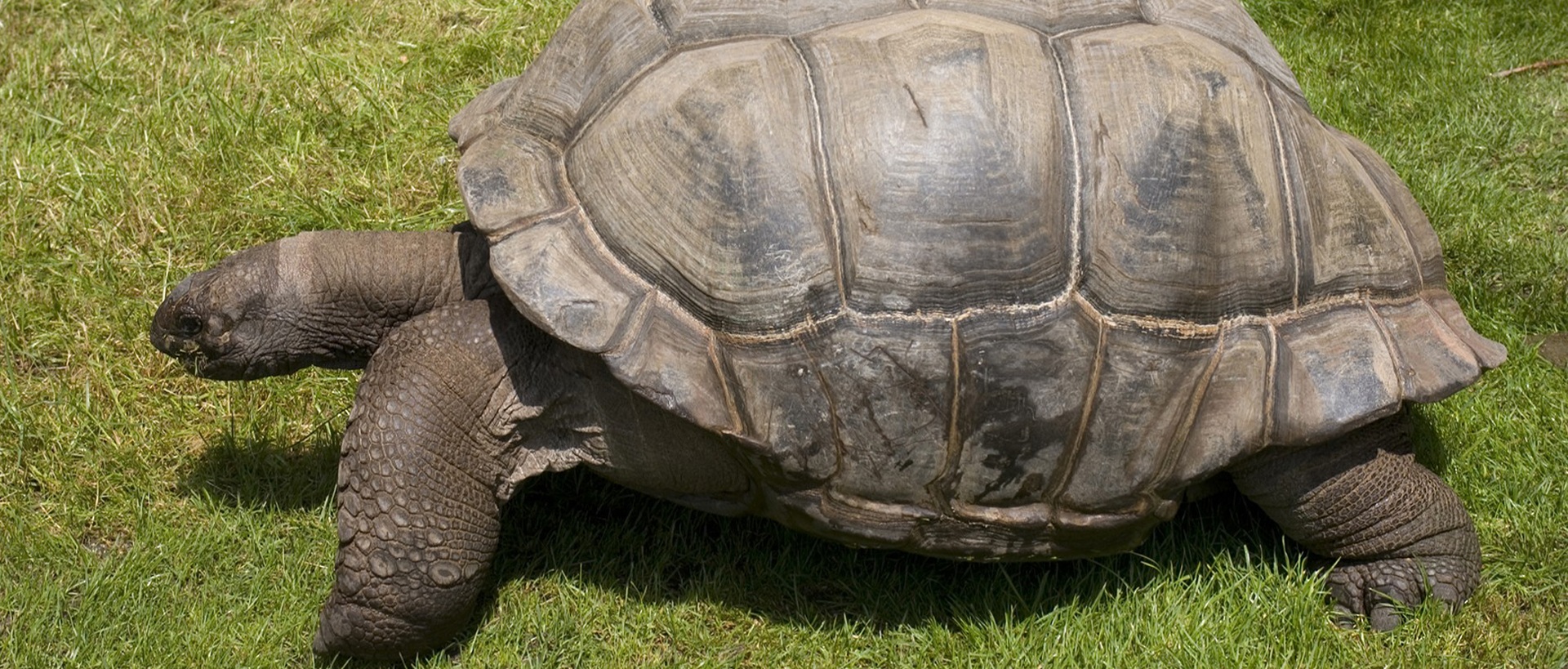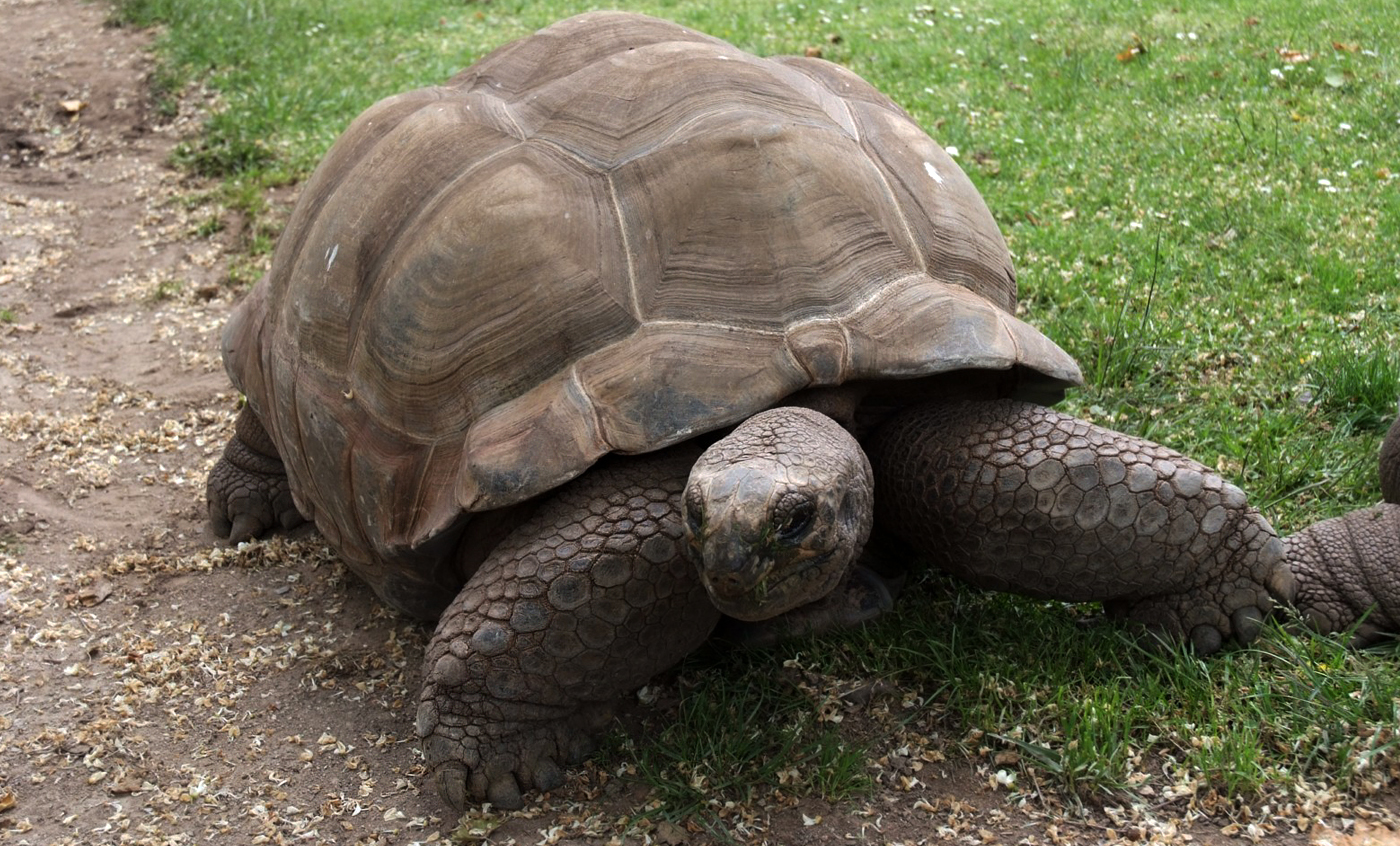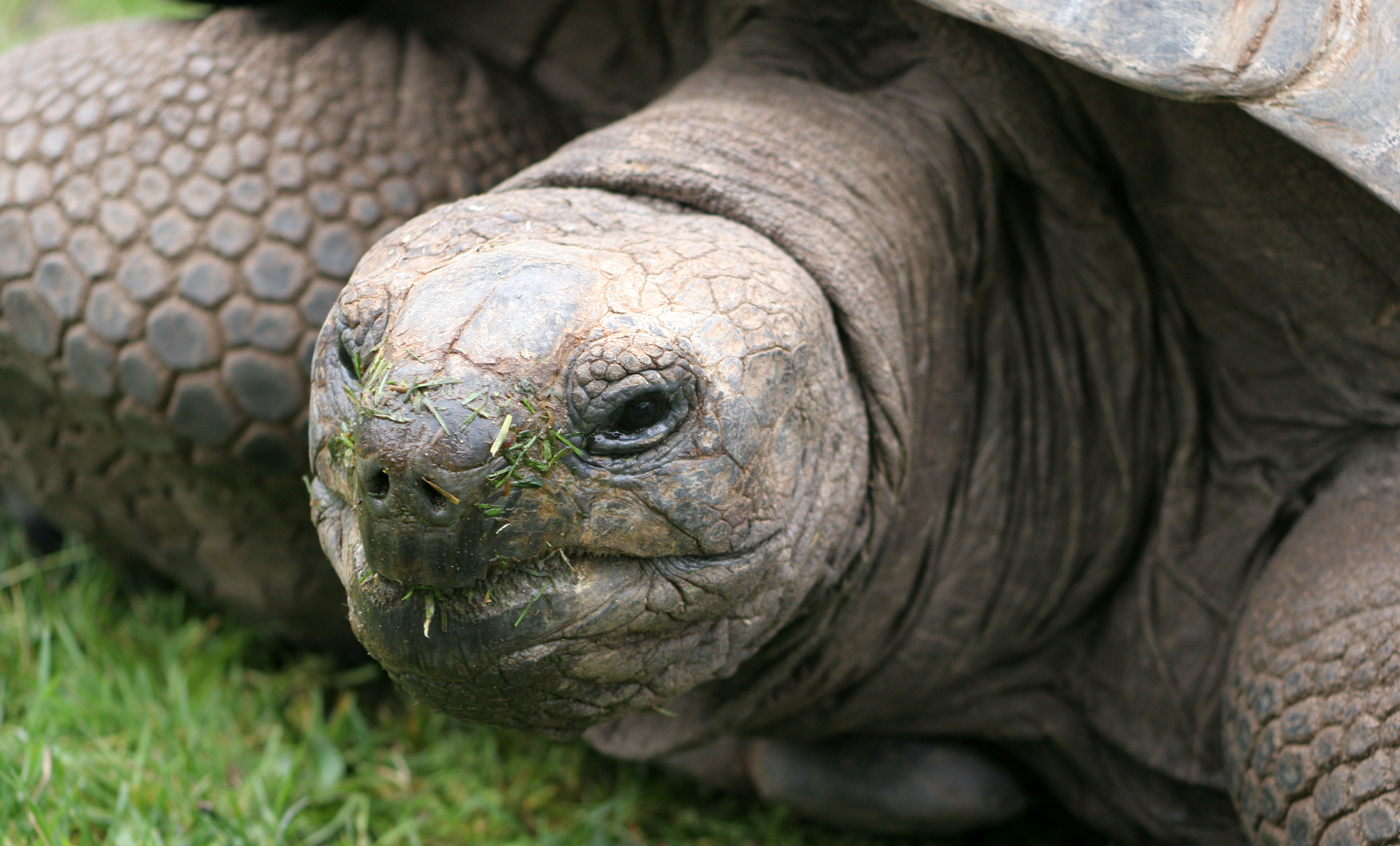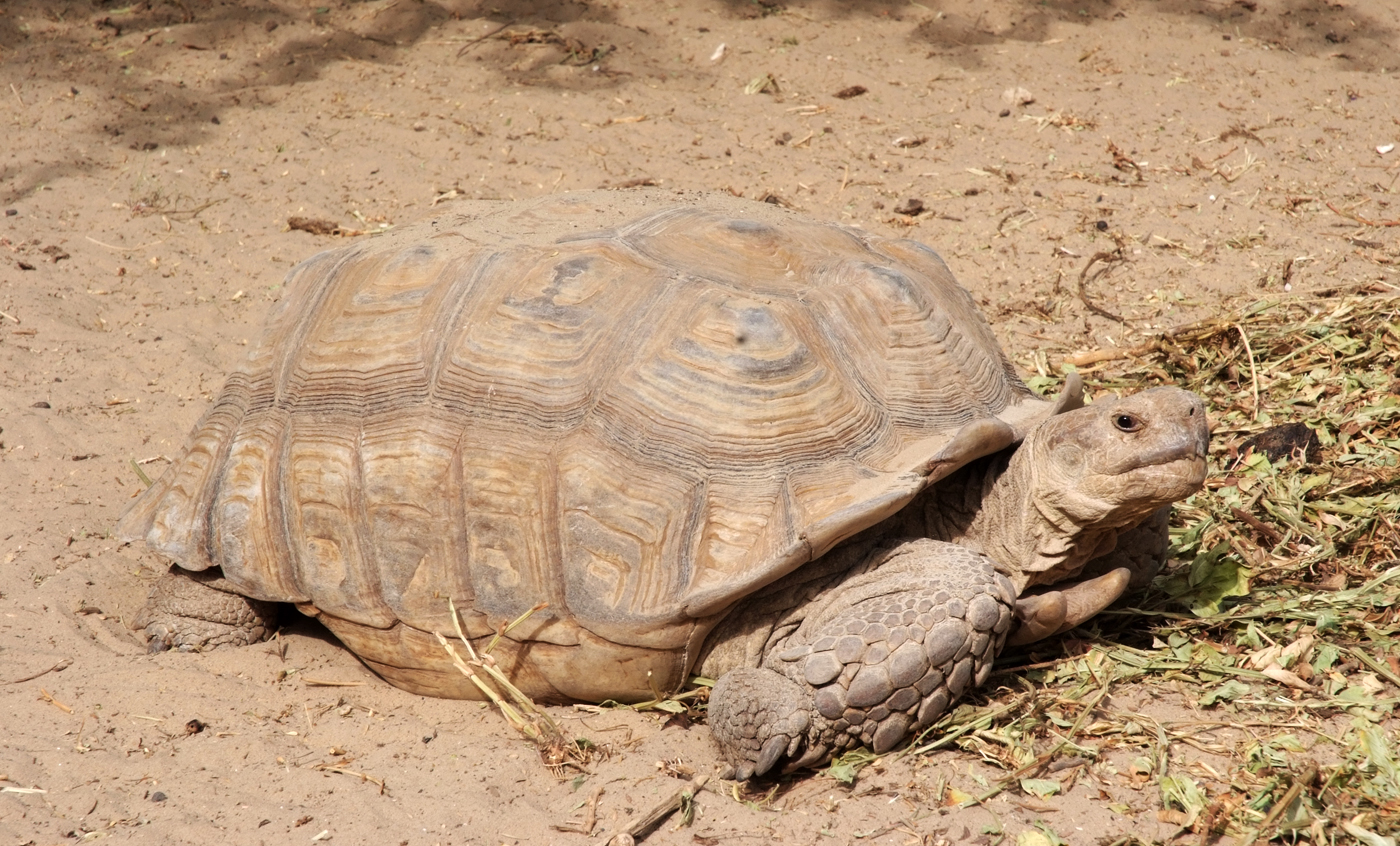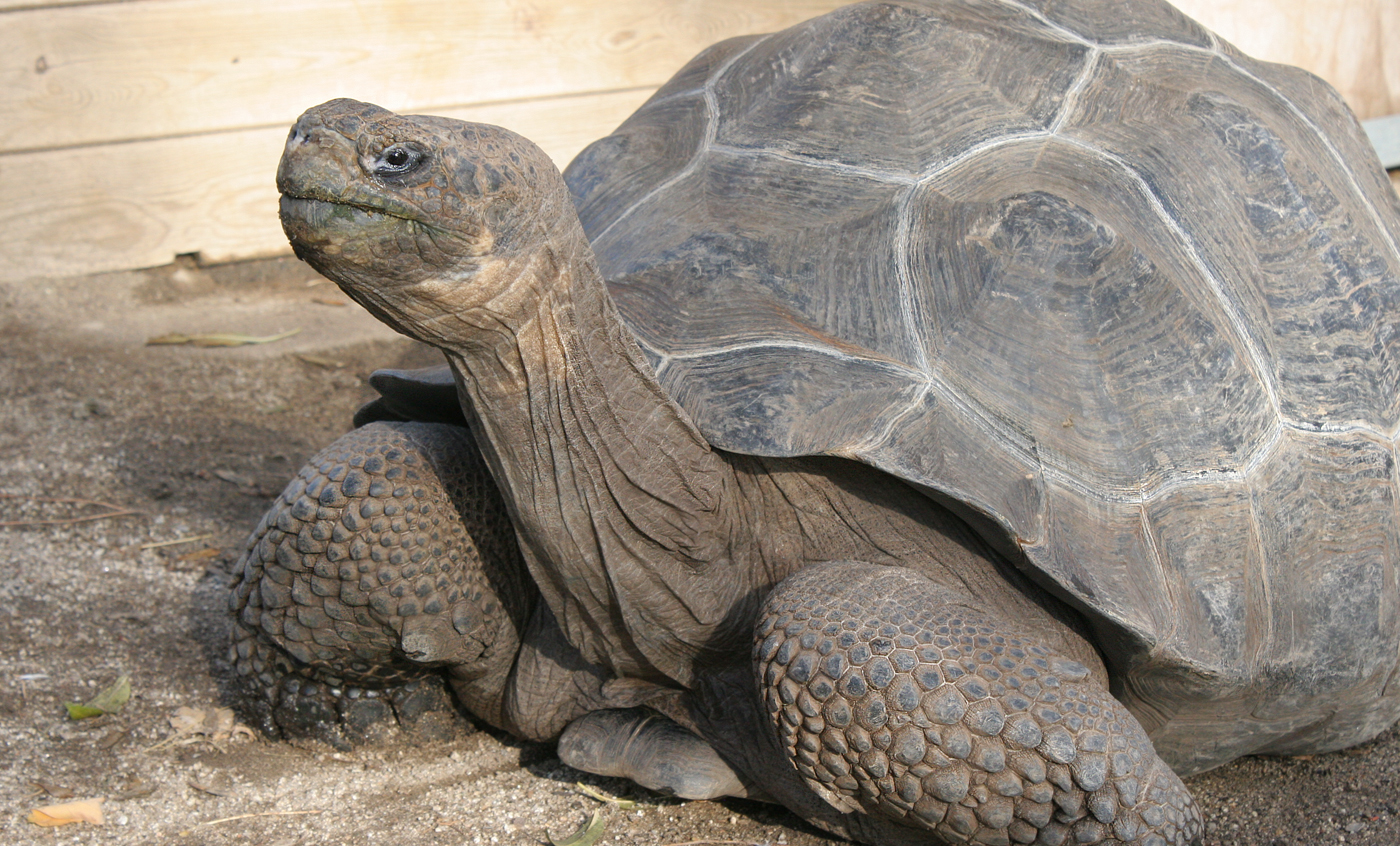Aldabra giant tortoise
This species was known as Geochelone gigantea until recently. It is originally from the Aldabra Atoll, located in the Indian Ocean, with a population of over 150,000 wild tortoises. It has also been introduced on the Seychelles, and on other islands including Reunion, Mauritius and Zanzibar.
It is mainly vegetarian and feeds on grasses and leaves of low-laying plants.
Natural habit
Atoll of Aldabra, in the Seychelles archipelago
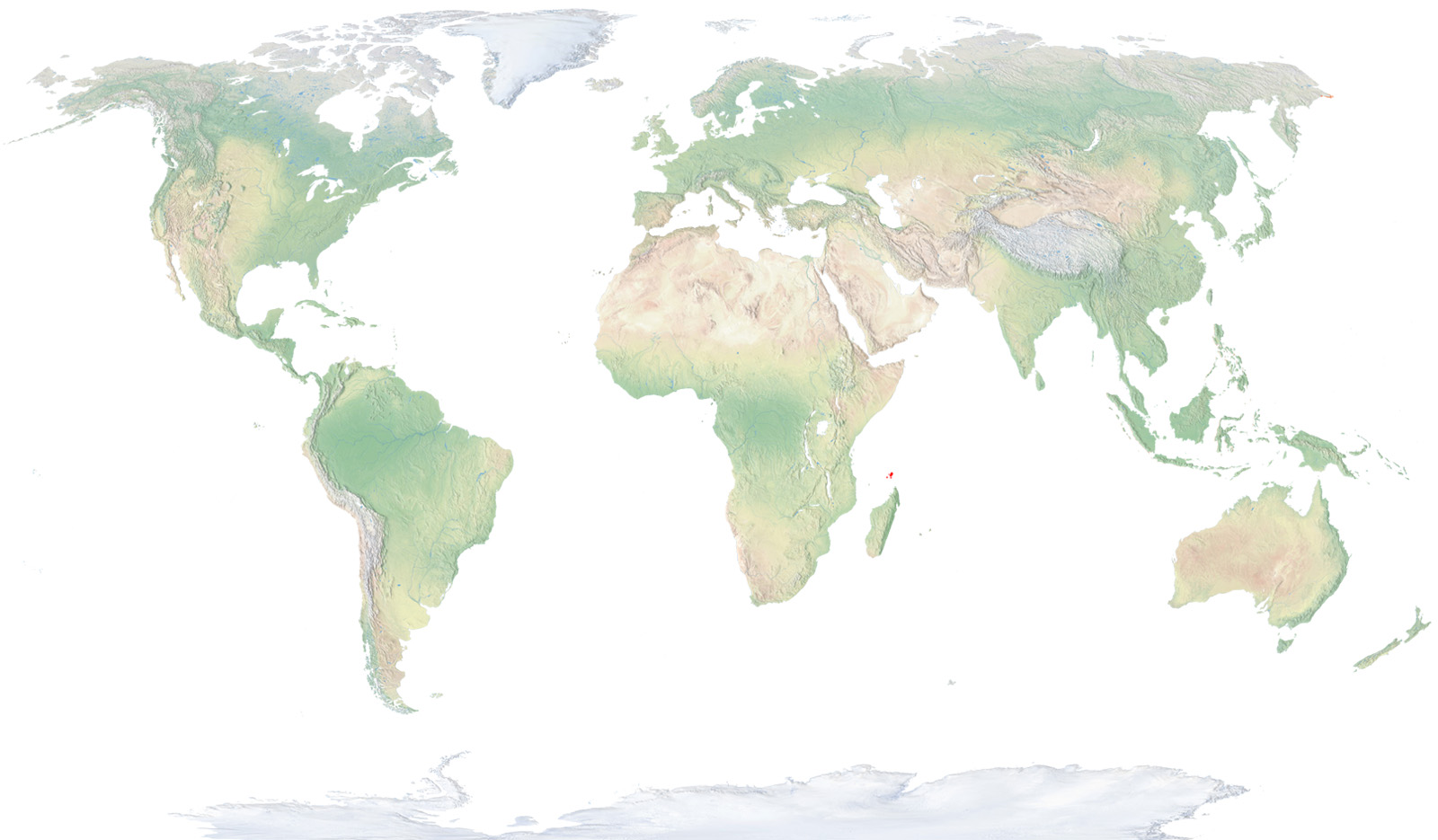
- Distribution / Resident
- Breeding
- Wintering
- Subspecies
Risk level
- Extint
- Extint in the wild
- Critically endangered
- In Danger
- Vulnerable
- Near threatened
- Minor concern
- Insufficient data
- Not evaluated
Taxonomy
Physical characteristics
Biology
Reproduction
Biology
This is one of the largest reptiles in the world, as adults reach an average length of 120 cm and a weight of 200 kg, although exceptional specimens are known of that have exceeded 160 cm and 400 kg. It can be differentiated from the only species with which it could be confused, the Galapagos tortoise, by the presence of a small nuchal plate that the latter doesn't have.
Its skin is dark grey to black, with a prominent, convex shell, a long neck that helps it feed on the leaves of bushes, and short, sturdy legs. The limbs and head are covered with bony scales.
Vegetation is scarce in this dry and inhospitable land on the Aldabra Atoll, and the tortoises mainly live in mangrove forests, where they find both shade and shelter, and areas close to the large central lagoon, covered by large extensions of grass.
Its favourite food is grass, stalks and tender shoots. Curiously, as food is not abundant in their limited habitat, these tortoises complement their vegetarian diets by ingesting the flesh of tortoises that have just died and that they find when travelling from one place to another.
Sexual maturity is determined more by size than age, with most individuals starting to reproduce when reaching about half of their total size, normally when they are about 25 years old. Mating takes place in early morning or at twilight, with the male mounting the female’s shell and pushing her, along with making intermittent grunting sounds. The breeding season is normally from February to May. Females lay eggs during the driest season, from June to September. The nests are small holes some 25 cm deep that the females dig with their rear feet, although they also sometimes use existing protected depressions in the ground. The number of eggs varies from nine to 25, and the incubation period is from three to eight months, depending on the ambient temperature.
Diurnal and terrestrial, it lives both alone and in groups, with groups mainly forming in open pastures. They are more active in the morning, when they search for food. They dig underground holes and rest inside pools of water or mud to stay cool during the hottest part of the day.
Although they are characteristically slow and lumbering, they can reach considerable speeds, especially when they feel threatened.
.
Since there are no predators on the atoll, the most important natural causes of death of these animals in their natural habitat are the extremely-high temperatures during the hottest hours of the day, as well as falling into the numerous holes and cracks in the uneven coral substratum, then unable to get out. It also merits mention that the Seychelles inhabitants pose no danger to tortoises, as they respect them, considering them familiar totems, even nicknaming them with the lovely term ‘Malila Queen’.
This species is not in danger of extinction today, as calculations estimate that there are more than 150,000 specimens distributed unevenly on the three islets that make up the Aldraba Atoll. However, threats to a single population located in a small territory are always present and the species thus continues to be considered as extremely fragile.



